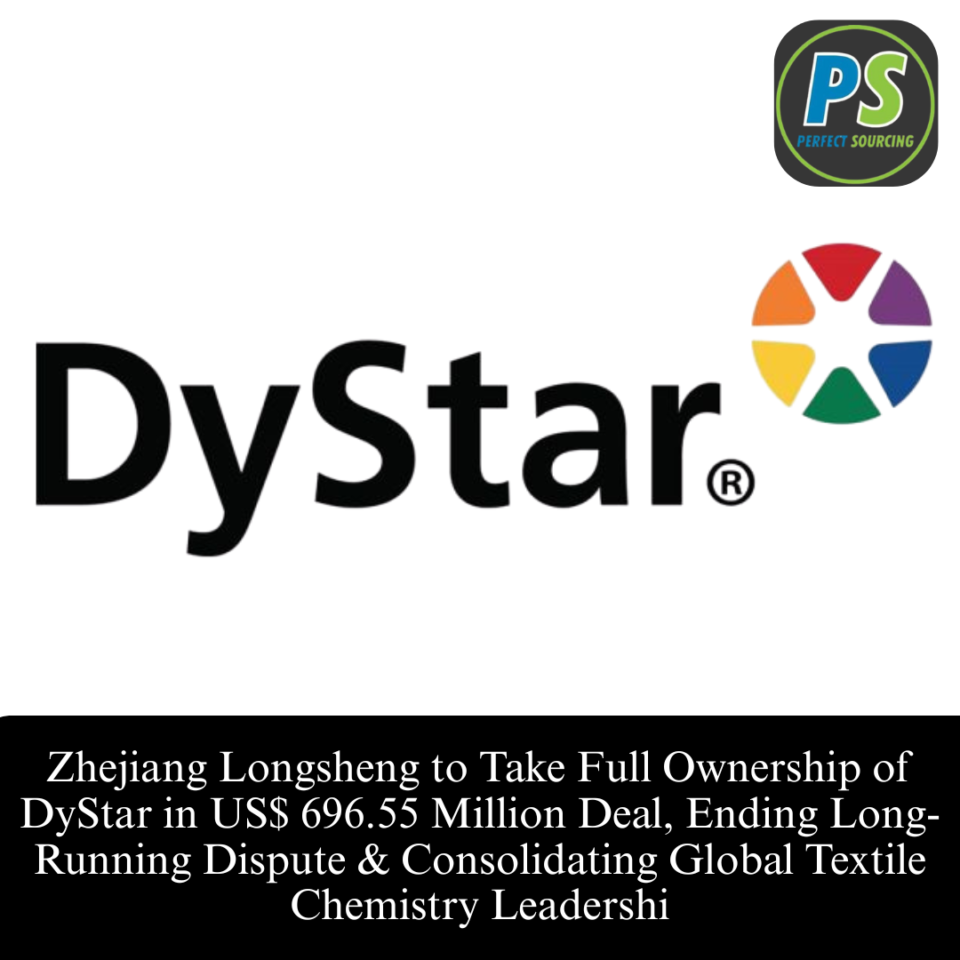DyStar Group, one of the world’s leading specialty chemical and textile dyes providers, will become a fully owned subsidiary of China’s Zhejiang Longsheng Group Co., Ltd., following a share purchase agreement to acquire the remaining 37.57% stake previously held by Kiri Industries Limited. The transaction, valued at approximately US$ 696.55 million, is expected to close by 3 November 2025, subject to regulatory approvals.
Longsheng currently holds 62.43% of DyStar — and this acquisition brings clarity to a long-standing legal dispute, paving the way for unified ownership and strategic alignment. DyStar Managing Director Yalin Xu said the transition will bring “certainty, confidence and renewed strategic focus,” enabling the business to operate with clearer direction and stronger long-term visibility.
With full control, Longsheng is positioned to integrate DyStar’s global operations more tightly across textile dyes and chemicals — reinforcing its ambitions around sustainable chemical innovation, advanced textile chemistry and global supply chain leadership.
Industry watchers expect this move to accelerate DyStar’s investment into R&D, expand its international footprint and strengthen high-performance colouration solutions for global customers. The acquisition also reflects intensifying consolidation within the textile chemicals landscape — driven by scalability, vertical integration and the need for deeper supply chain control.
Serving over 7,000 textile clients worldwide and commanding an estimated 21% share of the global specialty dyes market through Longsheng’s channels, the DyStar transition is likely to have downstream implications for textile supply chains.
For textile manufacturers and dye consumers in India, the development is particularly noteworthy — with potential impact on pricing, technology access, chemical availability, and next-gen process innovation over the coming years.

